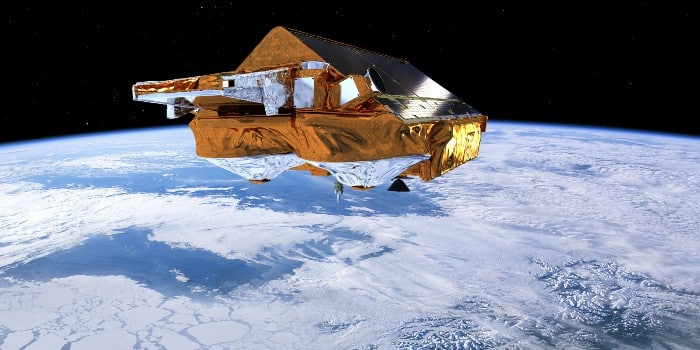Now, in a new study, a Danish student has shown that the rise is accelerating. In other words, the oceans are rising faster every year. The new research supports previous studies and has been published in the scientific journal Advances in Space Research.
 The calculations were done by Tadea Veng, who studies Earth and Space Physics and Engineering at DTU Space under the supervision of Professor Ole Baltazar Andersen.
The calculations were done by Tadea Veng, who studies Earth and Space Physics and Engineering at DTU Space under the supervision of Professor Ole Baltazar Andersen.
“Using data from independent European satellites, our results show the same rate of acceleration in sea level rise used by the UN Climate Panel, which they based on data from American satellites,” says Tadea Veng.
According to the new calculations, the average acceleration between 1991 and 2019 was 0.1 mm/year2 (or to be more precise, 0.095 mm/year2). This means that if, for example, the oceans rose by 2 mm in 2000, by 2010 they would have risen by 3 mm, and around 2020 by almost 4 mm.
In December, 25-year-old Tadea presented her research at the annual meeting of the American Geophysical Union, the world’s largest conference on space and geophysics research.
The calculations are based on data from a number of European remote-sensing satellites in orbit around Earth (the European Space Agency’s ERS1, ERS2, Envisat and Cryosat missions).
Tadea Veng compared her own results to calculations based on the US satellite data used in the climate change reports regularly published by the IPCC. (The US satellites are NASA’s Topex/Poseidon, Jason-1, Jason-2 and Jason-3.) Based on data from the US satellites, the acceleration has been calculated as 0.084 mm/year2.
 But unlike the US satellites, European satellites also take measurements in the Arctic region. Therefore, the new research provides a more comprehensive picture of the global rise in sea levels.
But unlike the US satellites, European satellites also take measurements in the Arctic region. Therefore, the new research provides a more comprehensive picture of the global rise in sea levels.
“In recent years, there’s been a good deal of debate about the acceleration due to inaccuracies in the satellite measurements from Topex/Poseidon, the oldest of the US satellites. That’s why it’s important that we now also have results using data from European satellites. Acceleration is an important factor in modelling future sea level rise,” says Professor Ole Baltazar Andersen, who co-authored the article.
“Tadea has presented an important and very useful contribution to the research and to the UN Climate Panel. It’s a solid piece of scientific work, which is why Advances in Space Research chose to publish it.”
In other words, there is now no doubt that the world’s oceans are rising, and that this has happened at an increasing rate over the past 30 years. Overall, the world’s oceans are estimated to have risen by approximately 75 mm from 1991 to 2019.
Satellites in orbit around Earth measure the distance to the oceans’ surface over time and across very large areas using radar signals, among other things. This data can then be used, for example, to calculate the acceleration of sea level rise. The European Space Agency launched the CryoSat satellite in 2010. It measures sea levels and changes in ice cover in the Arctic and Antarctic.
Coupled with data from the other European ESA satellites ERS1, ERS2, and Envisat, researchers from DTU Space have now provided a very precise picture of the acceleration in global sea level rise between 1991 and 2019. The calculations show that the average acceleration is 0.095 mm/year2. Based on data from the American NASA satellites Topex/Poseidon, Jason-1, Jason-2 and Jason-3, the acceleration had been calculated as 0.084 mm/year2.
Study by Technical University of Denmark
Journal Reference:
Tadea Veng, Ole B. Andersen. Consolidating sea level acceleration estimates from satellite altimetry. Advances in Space Research, 2020; DOI: 10.1016/j.asr.2020.01.016

